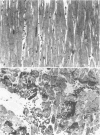Abstract
A model of an ex vivo-reperfused human heart was developed by using a modified Langendorff coronary perfusion circuit. The technical and physiologic aspects of reestablishing myocardial contractility are described. Preliminary studies were conducted in animals. In the present study, we obtained 12 human hearts that had been arrested with cardioplegic solution and excised from cardiac transplant recipients. The perfusate contained type-specific human donor red blood cells in a lactated Ringer's solution containing 5% dextrose. Myocardial contractility was successfully reestablished in 11 hearts and sustained for an average of 98 minutes (range, 79 to 180 minutes) at a coronary perfusion pressure of 80 mmHg. Left ventricular contraction pressures reached 40 mmHg (against intraventricular balloons at an internal pressure of 50 to 75 mmHg). Partial oxygen pressure (PO2) dropped significantly across the empty beating myocardium (from 498 +/- 40 mmHg to 219 +/- 53 mmHg [mean +/- SD]), but no significant change in hemoglobin saturation was observed. Myocardial failure generally stemmed from edematous changes leading to progressive impairment of myocardial relaxation. The intracoronary insertion of over-the-wire catheters did not adversely affect myocardial function. In conclusion, an ex vivo-supported human heart model has been developed that may have a number of applications, including the preclinical evaluation of new interventional diagnostic and therapeutic techniques aimed at the coronary circulation, and the investigation of myocardial mechanics, preservation, and metabolism.
Full text
PDF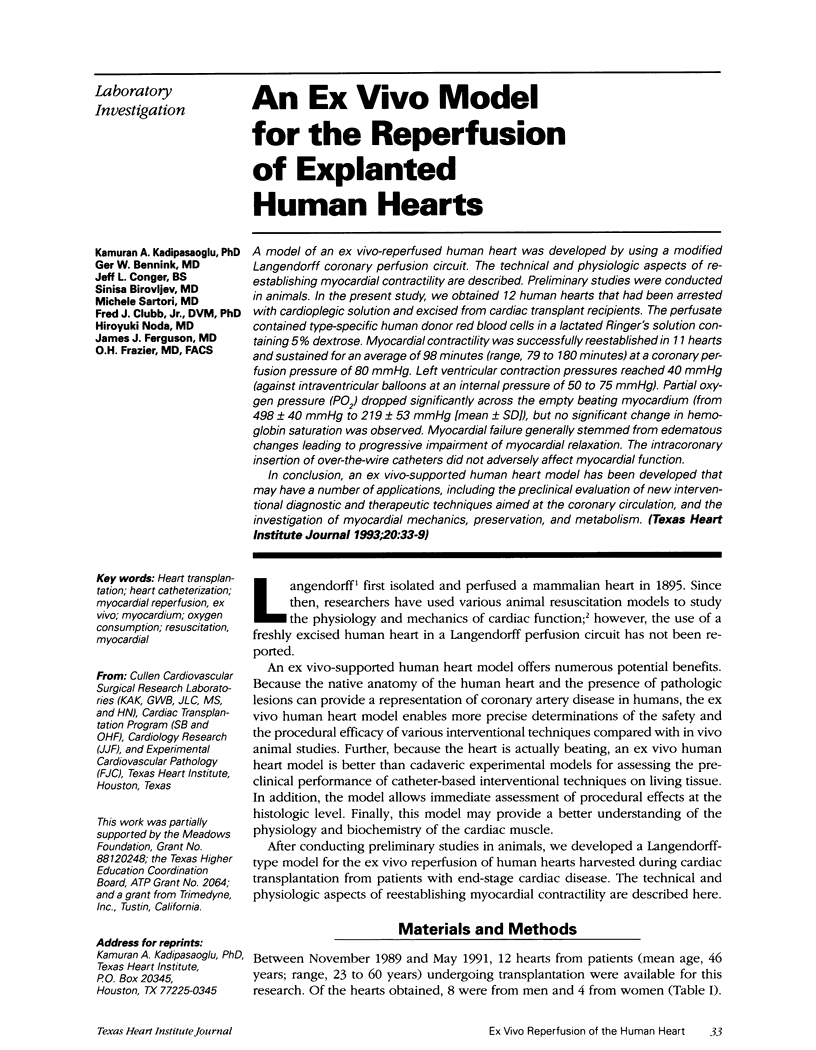
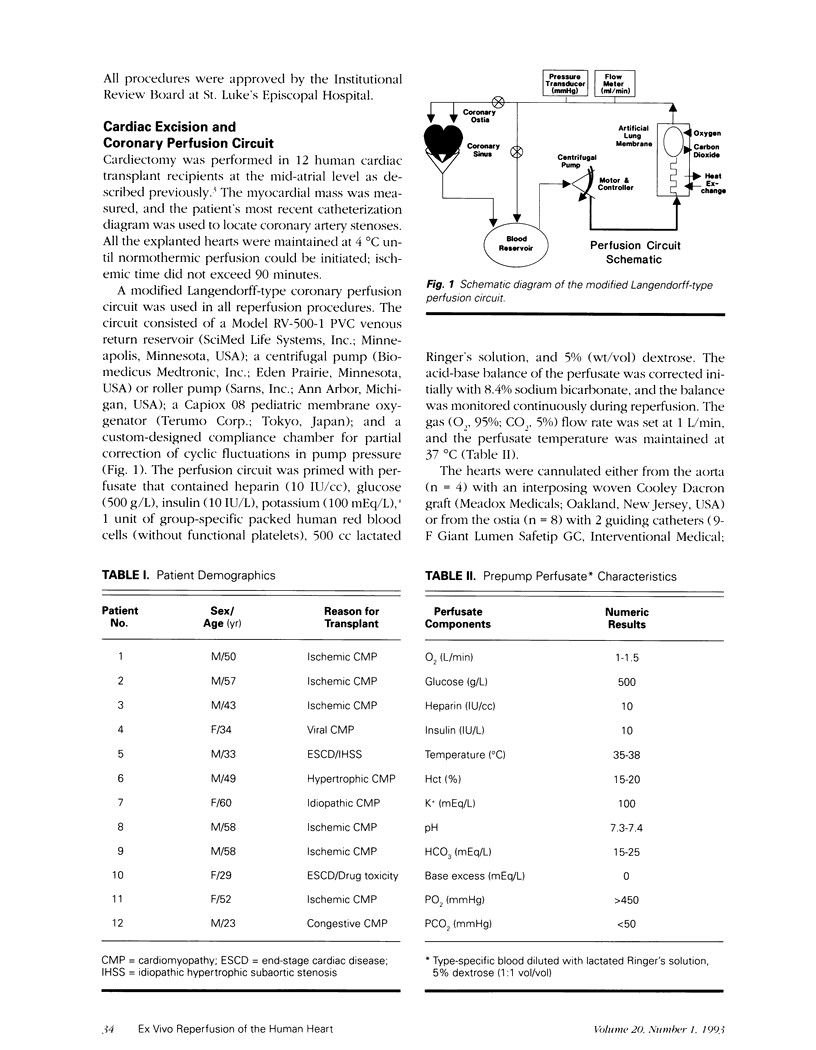
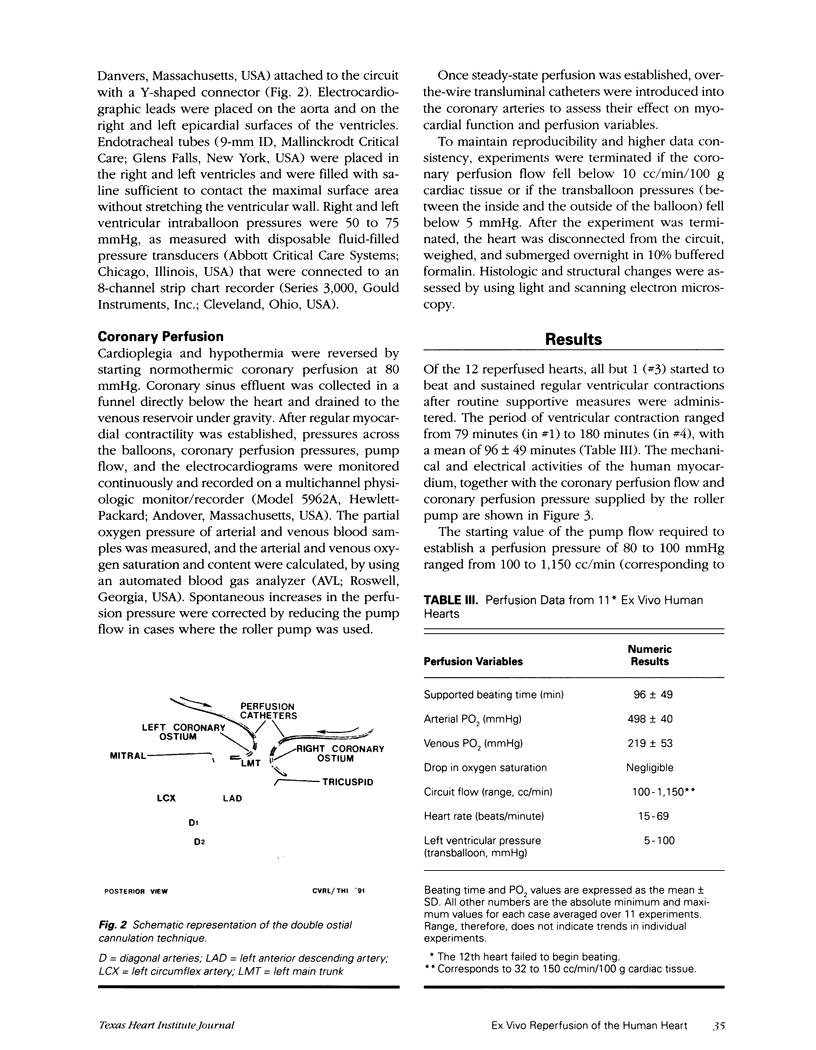
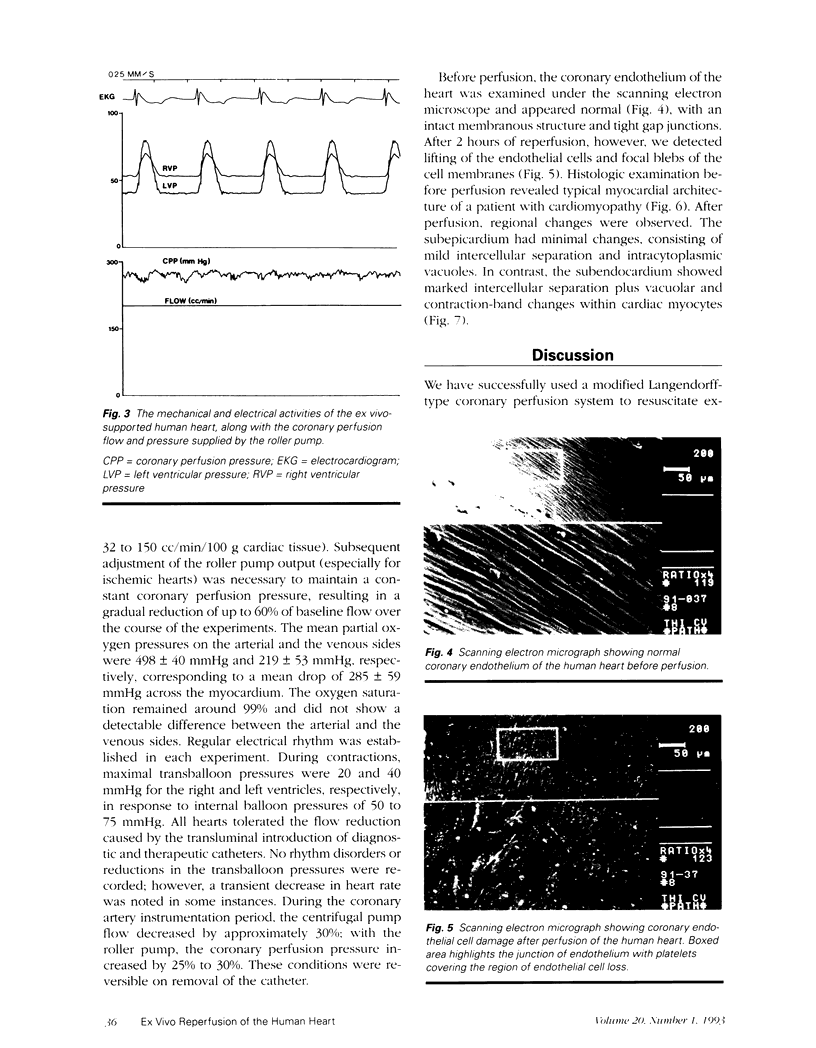
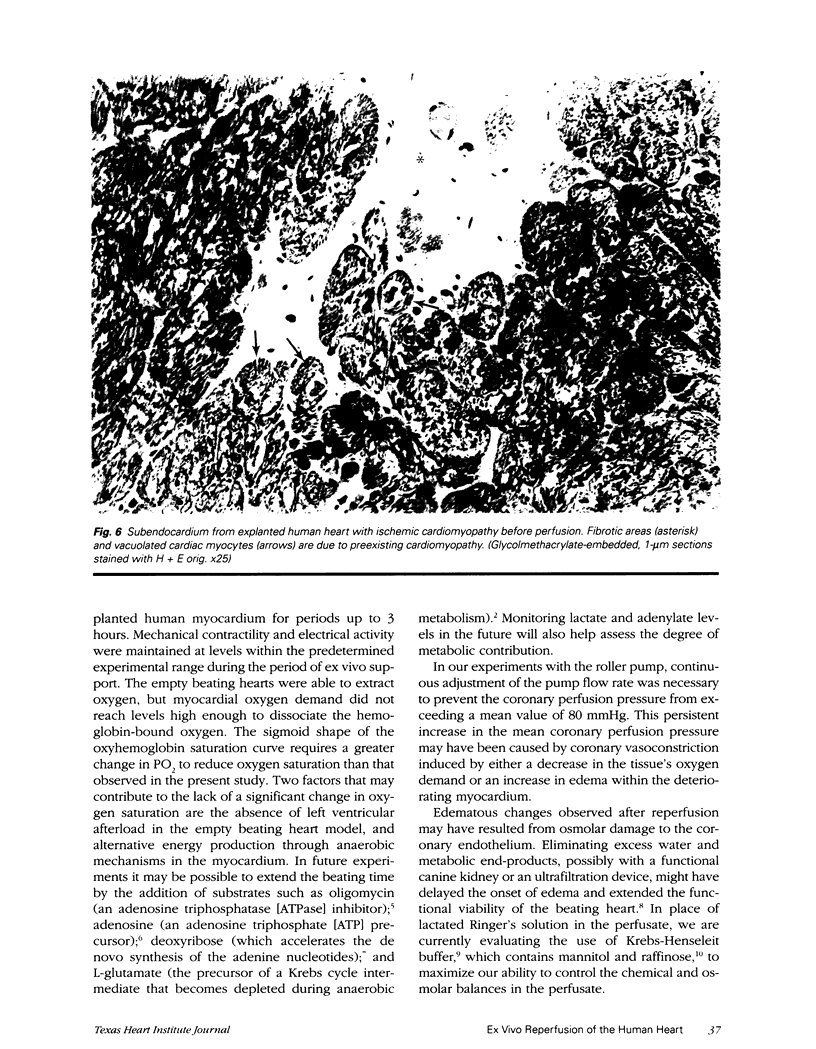
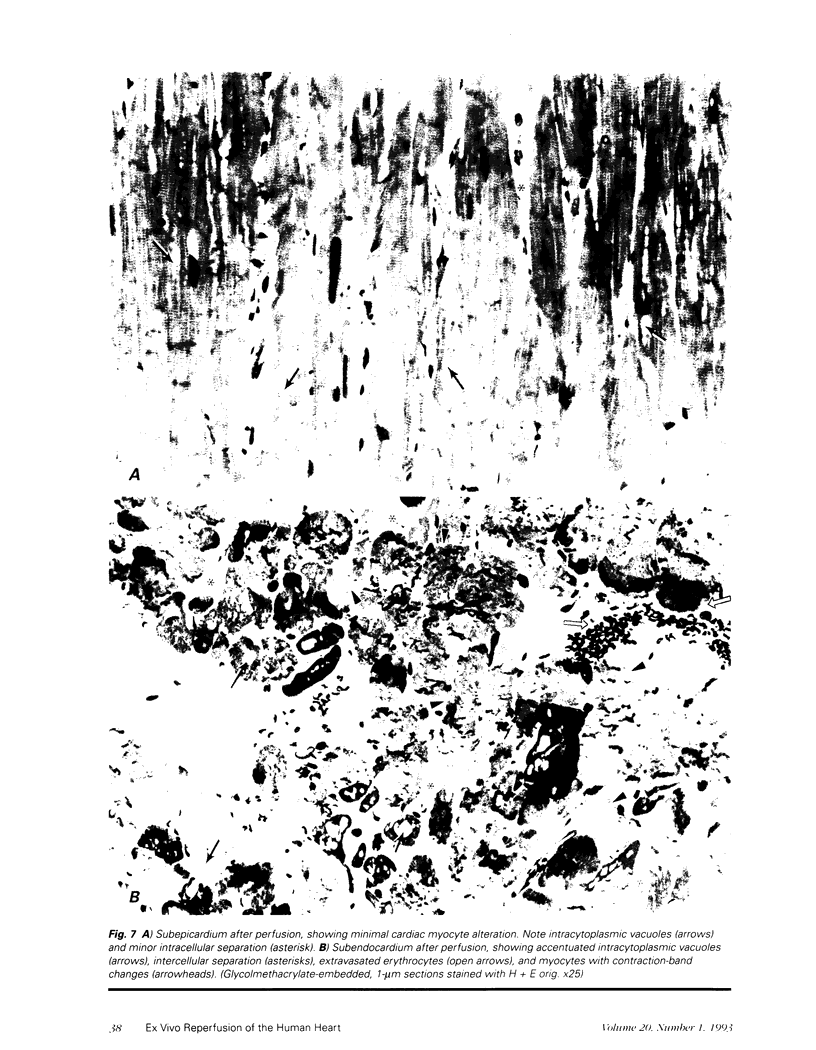
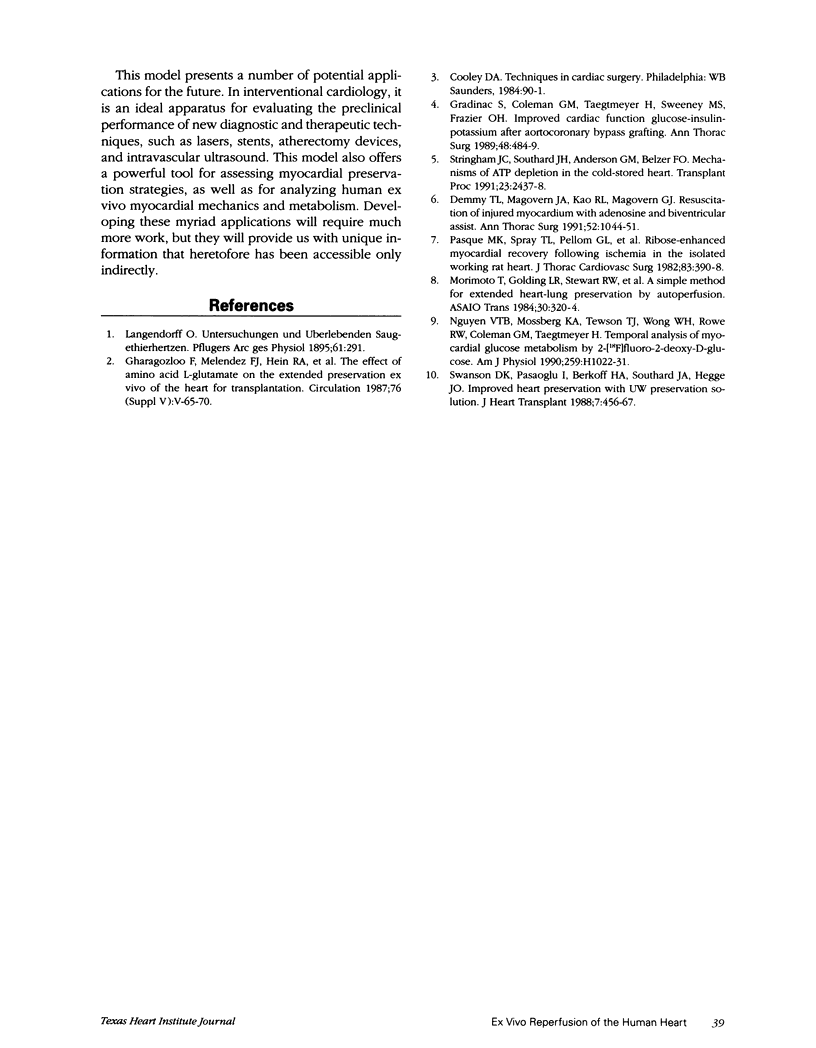
Images in this article
Selected References
These references are in PubMed. This may not be the complete list of references from this article.
- Demmy T. L., Magovern J. A., Kao R. L., Magovern G. J. Resuscitation of injured myocardium with adenosine and biventricular assist. Ann Thorac Surg. 1991 Nov;52(5):1044–1051. doi: 10.1016/0003-4975(91)91279-5. [DOI] [PubMed] [Google Scholar]
- Gradinac S., Coleman G. M., Taegtmeyer H., Sweeney M. S., Frazier O. H. Improved cardiac function with glucose-insulin-potassium after aortocoronary bypass grafting. Ann Thorac Surg. 1989 Oct;48(4):484–489. doi: 10.1016/s0003-4975(10)66844-0. [DOI] [PubMed] [Google Scholar]
- Morimoto T., Golding L. R., Stewart R. W., Harasaki H., Matsushita S., Shimomitsu T., Kasick J., Olsen E., Loop F. D., Nose Y. A simple method for extended heart-lung preservation by autoperfusion. Trans Am Soc Artif Intern Organs. 1984;30:320–324. [PubMed] [Google Scholar]
- Nguyê V. T., Mossberg K. A., Tewson T. J., Wong W. H., Rowe R. W., Coleman G. M., Taegtmeyer H. Temporal analysis of myocardial glucose metabolism by 2-[18F]fluoro-2-deoxy-D-glucose. Am J Physiol. 1990 Oct;259(4 Pt 2):H1022–H1031. doi: 10.1152/ajpheart.1990.259.4.H1022. [DOI] [PubMed] [Google Scholar]
- Pasque M. K., Spray T. L., Pellom G. L., Van Trigt P., Peyton R. B., Currie W. D., Wechsler A. S. Ribose-enhanced myocardial recovery following ischemia in the isolated working rat heart. J Thorac Cardiovasc Surg. 1982 Mar;83(3):390–398. [PubMed] [Google Scholar]
- Stringham J. C., Southard J. H., Anderson G. M., Belzer F. O. Mechanisms of ATP depletion in the cold-stored heart. Transplant Proc. 1991 Oct;23(5):2437–2438. [PubMed] [Google Scholar]
- Swanson D. K., Pasaoglu I., Berkoff H. A., Southard J. A., Hegge J. O. Improved heart preservation with UW preservation solution. J Heart Transplant. 1988 Nov-Dec;7(6):456–467. [PubMed] [Google Scholar]







